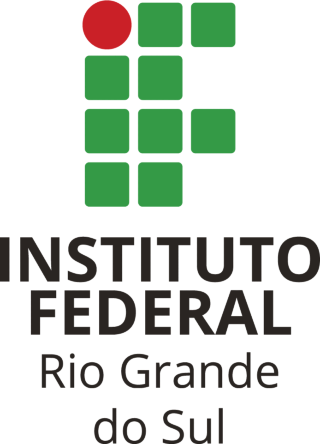Mapeamento sobre o ensino de física para surdos e deficientes auditivos: recursos didáticos, metodologias e desafios para a efetiva inclusão
| Title: | Mapeamento sobre o ensino de física para surdos e deficientes auditivos: recursos didáticos, metodologias e desafios para a efetiva inclusão |
| Author: | Kafer, Vanderléia |
| Abstract: |
A educação da pessoa com deficiência sofreu mudanças significativas ao longo da história, desde a criação de instituições especializadas (escolas especiais) até a difusão da conhecida Declaração de Salamanca e o princípio da inclusão escolar. Na educação de surdos, esse desenvolvimento é marcado pela luta do movimento social surdo brasileiro em defesa de seus direitos linguísticos e culturais, resultando na legislação em vigor. Contudo, são muitos os discursos a respeito da qualidade do sistema educacional inclusivo, que vem apresentando desafios em diversas esferas da educação. Dada a importância desse processo, a presente pesquisa realiza uma revisão da literatura, com características integrativas, a respeito do ensino de física para surdos e deficientes auditivos no Brasil. Explorando as produções científicas incluídas em dois principais repositórios (CAPES e SciELO), foram investigados os pontos centrais que caracterizam essa área. Por meio de análise de conteúdo foram desenvolvidas categorias que descrevem recursos didáticos, metodologias e desafios para a efetiva inclusão do surdo nas escolas brasileiras. Através desse mapeamento é possível perceber a imensidão de desafios que esse campo enfrenta, como, por exemplo, a ausência de material pedagógico e sinais específicos, além dos reflexos da falta de interação entre professor, aluno e intérprete na sala de aula. Assim, a pesquisa relata a importância de desenvolver estratégias para ampliar o contato entre o professor e o intérprete, visando a associação de conhecimentos e experiências em prol da aprendizagem do surdo. Também se destaca o incentivo às interações entre os estudantes, que pode ser proporcionado pelo interlocutor da Libras ou, em uma situação de escola bilíngue, através de uma semelhança linguística com o português escrito ou a Libras. Nessa perspectiva também são descritos alguns recursos didáticos e a inserção de novas tecnologias no ensino de física para surdos, apontando resultados animadores ao adotar estratégias que valorizam aspectos visuais e que respeitam a cultura e a vivência dos estudantes. Por fim, a pesquisa destaca a presença de lacunas nas produções científicas da área, expressando a relevância de encorajar, por meio de projetos de pesquisa, a produção de conhecimento sobre a inclusão em todos os níveis de ensino. Logo, a investigação ressalta a seriedade dessa temática e do fazer docente para a construção de uma educação realmente inclusiva, que atenda às especificidades dos estudantes e proporcione a aprendizagem de todos. The education of people with disabilities has undergone significant changes throughout history, from the creation of specialized institutions (special schools) to the dissemination of the well- known Declaration of Salamanca and the principle of school inclusion. In deaf education, this development is marked by the struggle of the Brazilian deaf social movement in defense of their linguistic and cultural rights, resulting in the legislation in force. However, there are many discourses about the quality of the inclusive educational system, which has been presenting challenges in various spheres of education. Given the importance of this process, this research carries out a literature review, with integrative characteristics, regarding the teaching of physics for the deaf and hearing impaired in Brazil. Exploring the scientific productions included in two main repositories (CAPES and SciELO), the central points that characterize this area were investigated. Through content analysis, categories were developed that describe didactic resources, methodologies and challenges for the effective inclusion of the deaf in Brazilian schools. Through this mapping, it is possible to perceive the immensity of challenges that this field faces, such as, for example, the absence of pedagogical material and specific signs, in addition to the reflections of the lack of interaction between teacher, student and interpreter in the classroom. Thus, the research reports the importance of developing strategies to expand the contact between the teacher and the interpreter, aiming at the association of knowledge and experiences in favor of the learning of the deaf. Also noteworthy is the encouragement of interactions between students, which can be provided by the Libras interlocutor or, in a bilingual school situation, through a linguistic similarity such as written Portuguese or Libras. From this perspective, some didactic resources and the insertion of new technologies in physics teaching for the deaf are also described, pointing out encouraging results when adopting strategies that value visual aspects and that respect the students' culture and experience. Finally, the research highlights the presence of gaps in scientific production in the area, expressing the importance of encouraging, through research projects, the production of knowledge about inclusion at all levels of education. Therefore, the investigation underscores the seriousness of this theme and the teaching work for the construction of a truly inclusive education, which meets the specificities of students and provides learning for all. |
| URI: | https://dspace.ifrs.edu.br/xmlui/handle/123456789/1648 |
| Date: | 2023 |
Files in this item
| Files | Size | Format | View | Description |
|---|---|---|---|---|
| 1234567891648.pdf | 304.9Kb |
View/ |
Texto completo |



